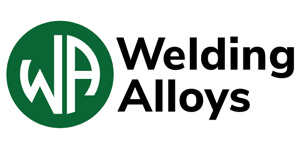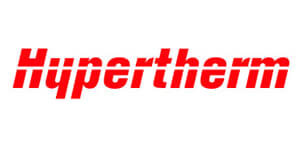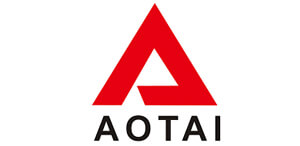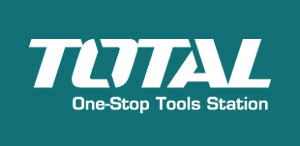
Argon (Ar)
Overview
Overview of Argon Gas
Argon (chemical symbol: Ar) is a noble gas belonging to the group 18 of the periodic table. It is colourless, odorless, and tasteless, making it one of the inert gases. Argon is the third most abundant gas in Earth’s atmosphere, after nitrogen and oxygen, accounting for about 0.934% of the atmosphere. Despite its prevalence, argon is relatively chemically unreactive due to its stable electron configuration.
Properties of Argon:
Physical State: Argon is a gas at room temperature and atmospheric pressure. It does not condense into a liquid or solid state under normal conditions.
Density: It is denser than air, which is why it is often used to fill incandescent light bulbs to prevent the filament from oxidizing.
Boiling and Melting Points: Argon has a boiling point of -185.7°C (-302.6°F) and a melting point of -189.3°C (-308.7°F).
Chemical Inertness: Argon is chemically inert, meaning it does not readily react with other elements or compounds. This property makes it suitable for various applications where a non-reactive atmosphere is required.
Isotopes:
Argon has three naturally occurring isotopes: argon-36, argon-38, and argon-40. Argon-40 is particularly interesting because it is a decay product of potassium-40, and its abundance in geological samples can be used for radiometric dating of rocks and minerals.
Argon’s unique combination of chemical inertness and abundance has led to its widespread use in various industrial, scientific, and commercial applications. Its ability to provide a stable and non-reactive environment makes it a valuable resource in a range of contexts, from welding to preserving cultural heritage.
Application
Applications of Argon Gas:
Welding and Metal Fabrication: Argon is commonly used as a shielding gas in welding processes such as Tungsten Inert Gas (TIG) and Gas Metal Arc Welding (GMAW). It prevents the welded metal from reacting with atmospheric gases, resulting in cleaner and stronger welds.
Lighting: In the past, argon was used in incandescent light bulbs to prevent the filament from burning in the presence of oxygen. While LED and other energy-efficient lighting technologies have largely replaced incandescent bulbs, argon is still used in specialized lighting applications.
Laboratory and Scientific Research: Argon is used as a carrier gas in chromatography and various analytical instruments. Its inertness is valuable in maintaining sample integrity and preventing unwanted reactions.
Cryogenics: Argon is used in cryogenic applications as a refrigerant for cooling and preserving biological samples, superconducting materials, and other materials requiring extremely low temperatures.
Industrial Processes: Argon finds use in processes such as annealing, sintering, and heat treating of metals, where controlled atmospheres are essential.
Preservation of Historical Documents and Artifacts: Argon can be used to create an inert atmosphere for preserving sensitive historical documents, artwork, and artifacts that are susceptible to deterioration due to exposure to oxygen.
Scuba Diving: Argon is sometimes used as a breathing gas in scuba diving at great depths, as it can help mitigate the effects of nitrogen narcosis.
Industries
Industries:
Argon gas finds applications in various industries due to its inert and non-reactive properties. Some of the prominent industries where argon is used include:
Welding and Metal Fabrication: Argon is commonly used as a shielding gas in welding processes such as Tungsten Inert Gas (TIG) and Gas Metal Arc Welding (GMAW). It prevents the weld area from reacting with atmospheric gases, leading to cleaner and stronger welds.
Manufacturing and Metal Processing: Argon is used in processes like annealing, sintering, and heat treating of metals to prevent oxidation and improve the material’s properties.
Electronics and Semiconductor Manufacturing: In semiconductor fabrication, argon is used in processes like ion implantation and plasma etching, where a controlled and non-reactive environment is crucial.
Cryogenics and Superconductivity: Argon is used as a cryogenic refrigerant for cooling and preserving materials that require extremely low temperatures, such as superconductors and biological samples.
Food and Beverage Industry: Argon is used to displace oxygen in containers of perishable food products to extend their shelf life by preventing spoilage.
Medical Industry: Argon is used in various medical applications, including cryosurgery to freeze and destroy abnormal tissue, and in some cases as a protective gas for maintaining a stable atmosphere around sensitive biological samples.
Aerospace and Aeronautics: Argon is used in aerospace applications, such as pressurizing and purging fuel tanks, providing a non-reactive atmosphere for testing and purging systems.
Oil and Gas Industry: Argon is used in drilling fluids to control formation pressure and prevent gas influx in oil and gas wells.
Automotive Industry: Argon is used in airbag inflators to ensure a quick and controlled inflation process during a collision.
Historical Artifact Preservation: Museums and archives use argon to create inert environments for preserving sensitive historical documents, artwork, and artifacts.
Entertainment & Recreation: In some specialized cases, argon is used as a breathing gas for deep-sea diving to help reduce the effects of nitrogen narcosis.
Research and Scientific Laboratories: Argon is used as a carrier gas in chromatography and various analytical instruments, as well as in experimental setups where an inert atmosphere is required.
These are just a few examples of the many industries that rely on argon for its unique properties. Its versatility and inert nature make it a valuable resource in a wide range of applications across both industrial and scientific domains.
Supply Options
Delivery Option
- On Site Delivery: We have enough resources to deliver argon to any location throughout the country. Our experienced & safety concern delivery team always ready to handover argon on your site.
- Collection from Factory: If our valued customers want to collection argon from our factory premises, they are always welcomed by our smiley faces. This option is not available for Liquid Gas Delivery
Delivery Schemes
Rental Scheme
To start renting a cylinder, you might need to pay an initial deposit. This is often a refundable amount that ensures you return the cylinder in good condition when you’re done with it. You will typically be charged a rental fee based on the duration you keep the cylinder. This could be daily or monthly basis. The rental scheme will have terms and conditions that you need to adhere to. This might include rules for proper handling of the cylinder, maintenance, and timely return. This scheme applicable for cylinder, Skid Tank & VIE tank.
Saleable Scheme
On the other hand, you also can buy cylinder from us. In that case you have to pay the actual price of the cylinder (non-refundable). And you just have to pay the gas price when you refill it. This scheme applicable for cylinder, Skid Tank & VIE tank.
Supply Options
| Options | Container Type | Container Capacity |
| Compressed Argon | Compress Gas Cylinders | 2.0 M³ |
| 6.0 M³ | ||
| 7.0 M³ | ||
| 7.5 M³ | ||
| Cylinder Manifold/MCP | Upto 30 Cylinder | |
| Liquid Argon | Cryogenic Tanks-Micro Bulk | Up to 1000 Liter |
| Cryogenic Tanks-Mini Bulk | 1000 to 5000 Liter | |
| Cryogenic Tanks-Bulk | 5000-100000 Liter |
+8801682 999 222
+8802 2222 89024











